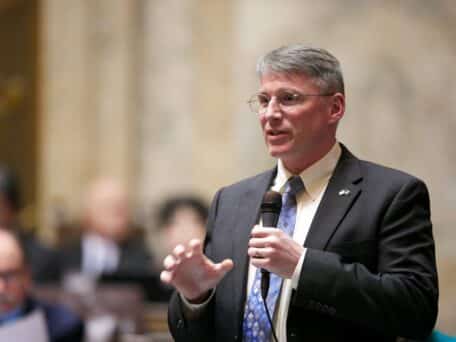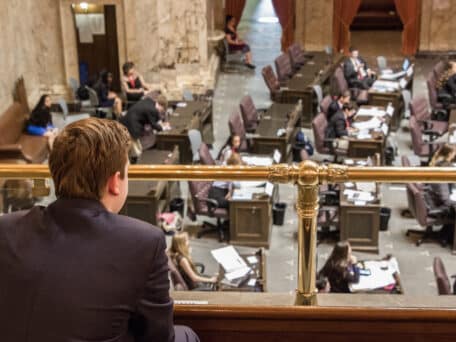Sound Transit is in the process of extending its Link Light Rail, which currently runs from SeaTac Airport to downtown Seattle, both northward and southward. While construction is only under way as far north as the U-District, Sound Transit is planning to extend the line all the way to Lynnwood (in 10 years). And the Everett Herald reports that people are unhappy with the routes Sound Transit has proposed.
When Sound Transit begins planning for a new light rail extension, its stable of highly-paid staff and consultants begins by making a list of possible “alignments” (or routes). Sometimes these alternative alignments are chosen with a specific station in mind, other times the location of the station itself is open-ended.
Once this initial list of alternatives is assembled, the staff and consultants attempt to predict some of the pros and cons of each alternative, like cost, ridership, and “TOD Potential” (a can of worms for a future post). The poorest-performing options according these metrics are discarded, and the remaining ones are subjected to a slightly more rigorous level of scrutiny.
 After two or three layers of analysis in this manner, when there are a few alternatives left standing, Sound Transit staff suggests that the board select these alignments be studied in the environmental impact statement (required by state law for projects like these). The board typically rubber-stamps this decision (via an unrecorded voice vote).
After two or three layers of analysis in this manner, when there are a few alternatives left standing, Sound Transit staff suggests that the board select these alignments be studied in the environmental impact statement (required by state law for projects like these). The board typically rubber-stamps this decision (via an unrecorded voice vote).
Sound Transit claims its process includes ample opportunity for public comment. But the Herald article paints a picture of near-unanimous opposition to the three final alternatives for the Lynwood Link extension that Sound Transit has developed. Every person interviewed opposes all three plans, and the City of Lynnwood even went so far as to prepare—at its own expense—a fourth alternative. This raises the question of how Sound Transit could think its alternatives were satisfactory when the Herald could find such staunch opposition so easily.
Perhaps Sound Transit is lying about soliciting public comment, perhaps nobody knew of the opportunity to do so, or perhaps the input was simply ignored. Either way, Sound Transit has now spent hundreds of thousands of dollars to come up with three Frankensteinian alignments that nobody wants.



